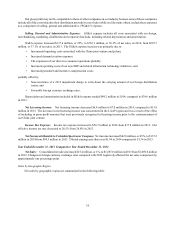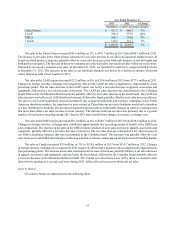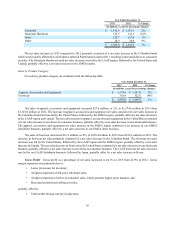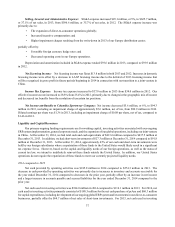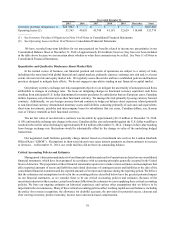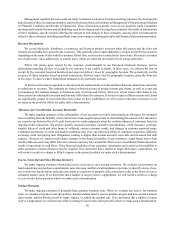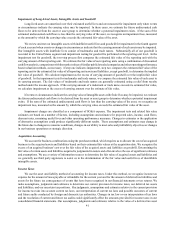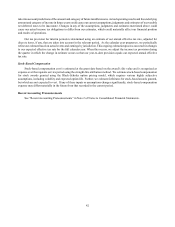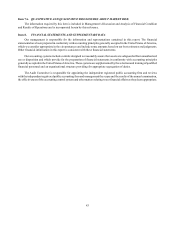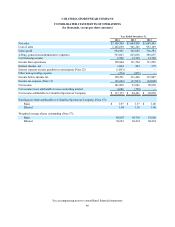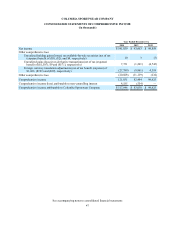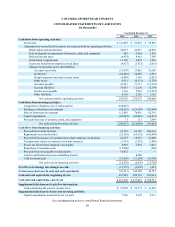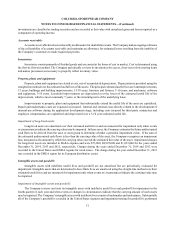Columbia Sportswear 2014 Annual Report Download - page 46
Download and view the complete annual report
Please find page 46 of the 2014 Columbia Sportswear annual report below. You can navigate through the pages in the report by either clicking on the pages listed below, or by using the keyword search tool below to find specific information within the annual report.42
take into account predictions of the amount and category of future taxable income. Actual operating results and the underlying
amount and category of income in future years could cause our current assumptions, judgments and estimates of recoverable
net deferred taxes to be inaccurate. Changes in any of the assumptions, judgments and estimates mentioned above could
cause our actual income tax obligations to differ from our estimates, which could materially affect our financial position
and results of operations.
Our tax provision for interim periods is determined using an estimate of our annual effective tax rate, adjusted for
discrete items, if any, that are taken into account in the relevant period. As the calendar year progresses, we periodically
refine our estimate based on actual events and earnings by jurisdiction. This ongoing estimation process can result in changes
to our expected effective tax rate for the full calendar year. When this occurs, we adjust the income tax provision during
the quarter in which the change in estimate occurs so that our year-to-date provision equals our expected annual effective
tax rate.
Stock-Based Compensation
Stock-based compensation cost is estimated at the grant date based on the award’s fair value and is recognized as
expense over the requisite service period using the straight-line attribution method. We estimate stock-based compensation
for stock awards granted using the Black-Scholes option pricing model, which requires various highly subjective
assumptions, including volatility and expected option life. Further, we estimate forfeitures for stock-based awards granted,
but which are not expected to vest. If any of these inputs or assumptions changes significantly, stock-based compensation
expense may differ materially in the future from that recorded in the current period.
Recent Accounting Pronouncements
See “Recent Accounting Pronouncements” in Note 2 of Notes to Consolidated Financial Statements.




